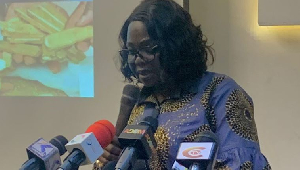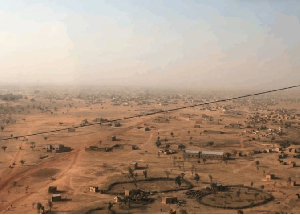The nation’s oil and gas sectors have grown significantly in recent years, as a pillar in the progressive growth and development of the economy, Madam Justina Owusu-Banahene, the Bono Regional Minister has said.
For instance, she cited that while the mining sector’s contribution to the country’s Gross Domestic Product (GDP) declined from GH¢11.449 billion in 2020 to GH¢10.105 billion in 2021 representing a decrease of 11.7 per cent, it increased to GH¢13.025 billion in 2022, representing 28.9 per cent climb.
These trends, according to Madam Owusu-Banahene, therefore called for prudent public financial management measures to ensure that such developments did not distort government’s public expenditure projections.
The Regional minister made these revelations during a day’s workshop on the dissemination of the 2021/2022 mining, oil and gas, as well as the maiden 2020 Artisanal and Small Scale-Mining (ASM) Reports in Sunyani.
It was organised by the Ministry of Finance and attended by Heads of Departments and Agencies, civil society organisations, traditional authorities and the media.
However, Madam Owusu-Banahene said the country’s gold production shrank by 91.7 percent in 2021, mainly due to the introduction of a three percent Withholding Tax on small-scale production of unprocessed precious minerals.
She said the government’s decision to subsequently halve the rate of the impost, from three percent to 1.5 percent, spurred a recovery reflected in the 569-percentage increase in official records on the small-scale sector’s output in 2022.
Relative to the other sectors, the mining sector was the fifth largest economic activity by value in 2021 and the third in 2022, she added.
The mineral export proceeds in 2021 and 2022 represent 36 percent and 39 percent of total merchandise exports respectively, which were more than the contributions of the other major forex earners, such as cocoa, and crude oil.
Madam Owusu-Banahane said the upstream oil and gas sector in the country contributed 4.89 percent to the nation’s GDP, and 6.91 percent of total government revenue, and 7.03 percent of domestic revenues in 2021.
A total of 11,615,029 barrels of crude oil was exported by GNPC in respect of CAPI and royalties for an amount of US$496,286,197.87, she stated, saying the other partners exported 55,843,177 barrels of crude in 2022.
Thus, the total crude oil exports for 2022 as reported by the Bank of Ghana were 67,458,206 barrels valued at US$2,910.6 million.
That translates into 31.19 percent of total merchandise exports in 2022, she stated, saying in 2021, the total value of crude oil exports was US$3,947.73 million which accounted for 26.81 percent of gross merchandise exports.
Later in an interview with the media, Dr Steve Manteaw, the Co-Chair GHETI encouraged the government and local Authorities to begin to see mineral revenues as income for investments as against looking at it as income for consumption.
“We invested $30 million dollars of oil revenues in the Kotoka Terminal Three project through the Ghana Infrastructure Investment Fund and today the return on that investment is inching close to $40 million dollars and this is the way to go”, he stated.
Dr Manteaw said the mineral endowment of the country and of the various host communities remained capital, saying, it was only revenue that could constitute capital for investment.
“And so, when you go on the path of using these revenues to finance recurrent expenditure, chances are that by the time the gold is exhausted, we would have nothing to show for it”, he stated.
Business News of Sunday, 6 October 2024
Source: GNA
Mining sector contribution to Ghana's GDP increased to over GH¢13 billion in 2022 - Minister
Entertainment












